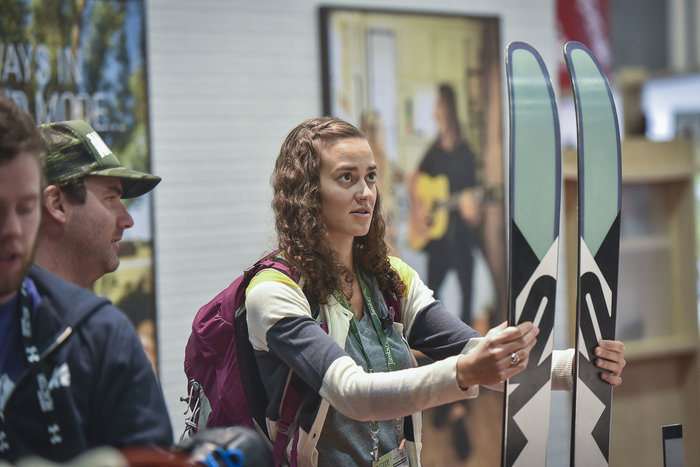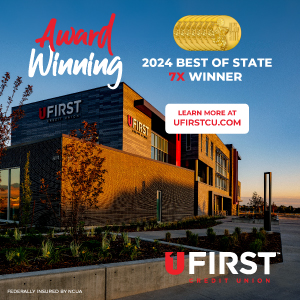At the start of the National Park Service’s centennial year, several speakers at an outdoor industry get-together in Salt Lake City pushed for more people to make their way to the nation’s federally owned lands.
At the start of the National Park Service’s centennial year, several speakers at an outdoor industry get-together in Salt Lake City pushed for more people to make their way to the nation’s federally owned lands.
Unless, one speaker said, you’re involved in the development of fossil fuels.
Terry Tempest Williams, an author who lives in Castle Valley, called for a shutdown of oil and gas leases on public lands and urged attendees to join a campaign to “keep it in the ground.”
“How about educating and supporting those who work for you and those in your community calling for the end to fossil fuel, be it coal or oil and gas lease sales on our public lands?” Williams said at the Outdoor Industry Association breakfast that served as the kickoff of the recent Outdoor Retailer Winter Market.
Williams cited a Center for American Progress report that indicated 42 national parks are threatened by fossil fuel development — 12 where oil and gas drilling is occurring and 30 where it could be happening in the near future.
“We need to keep it in the ground,” she said.
Already, she said, oil, coal and natural gas taken from federally owned lands and waters are responsible for more than 20 percent of country’s total greenhouse emissions. “It’s hard to imagine that if the unleased fossil fuels remaining under federal lands were to be developed, 450 billion tons of CO2 (carbon dioxide) would be released in the atmosphere,” she said.
“We can shut down these oil and gas leases on public lands. That’s what I’m going to do.”
Several speakers, including Williams, encouraged the public to either discover or become reacquainted with national parks during the centennial year. They noted programs launched to get more school-age children to visit, including an initiative to give every fourth-grader in the nation a free pass for each student and their family to visit one of the 2,000 federally managed lands and waters.
Jon Jarvis, director of the National Park Service, invited every American to “find your park,” which he described as “that special place in our parks and public lands that means something particular to you.” He said that each member of the audience likely had “some sort of life-defining moment in a national park or on our public lands.”
He and others want to see more young people doing the same. During a two-day spree of outdoor activities in the Santa Monica Mountains, 15,200 new junior park rangers were sworn in, “really reaching exactly the young demographic that is part of the centennial,” he said.
“The National Park Service centennial is really both time to reflect on history and focus on creating a movement. … But it is also more important, I think, and an imperative to engage the next generation to create that constituency of support that we are all going to need,” Jarvis said.
Jarvis encouraged audience members to help with cobranded projects, support stewardship programs, help Americans find and explore parks, get children involved in activities close to their homes and “empower the next generation of leaders that reflect the diversity of the nation.”
“And I know that each and every one of you and your business in particular are committed to this movement, that really propels the park system and our public lands into the next century so that we can have the support to protect these places and engage all Americans and keep the outdoors relevant to the next generation,” he said.
Williams, who has worked five years on an upcoming book titled The Hour of Land: A Personal Topography of America’s National Parks, said there is a need to find more diverse audiences to enjoy parks and to protect wilderness and public lands. She said she is “stunned” by how little people know about national parks.
“It is not enough to see these lands as portals of recreation and retail, commodities and commerce, but the open door to awe and wonder and acts of the imagination that create hope for humanity, not just the isolation and promotion of the individual,” she said.
She added that “we are at a crossroads” as the centennial begins. “We can continue on the path that we have been on — a path that privileges profit over people and land — or we can unite as citizens with a common cause: the health and wealth of the Earth that sustains us,” she said.
Williams also urged audience members to market public lands as “public commons that need to be cared for, fought for and loved as the sacred lands that they are” and to “find our activist roots, that you in this industry put protection over profit because, in your heart, you know it’s the same thing.”
About 22,000 people were expected to be part of the four-day Winter Market tradeshow at the Salt Palace Convention Center, generating more than $20 million in direct delegate spending.
Unless, one speaker said, you’re involved in the development of fossil fuels.
Terry Tempest Williams, an author who lives in Castle Valley, called for a shutdown of oil and gas leases on public lands and urged attendees to join a campaign to “keep it in the ground.”
“How about educating and supporting those who work for you and those in your community calling for the end to fossil fuel, be it coal or oil and gas lease sales on our public lands?” Williams said at the Outdoor Industry Association breakfast that served as the kickoff of the recent Outdoor Retailer Winter Market.
Williams cited a Center for American Progress report that indicated 42 national parks are threatened by fossil fuel development — 12 where oil and gas drilling is occurring and 30 where it could be happening in the near future.
“We need to keep it in the ground,” she said.
Already, she said, oil, coal and natural gas taken from federally owned lands and waters are responsible for more than 20 percent of country’s total greenhouse emissions. “It’s hard to imagine that if the unleased fossil fuels remaining under federal lands were to be developed, 450 billion tons of CO2 (carbon dioxide) would be released in the atmosphere,” she said.
“We can shut down these oil and gas leases on public lands. That’s what I’m going to do.”
Several speakers, including Williams, encouraged the public to either discover or become reacquainted with national parks during the centennial year. They noted programs launched to get more school-age children to visit, including an initiative to give every fourth-grader in the nation a free pass for each student and their family to visit one of the 2,000 federally managed lands and waters.
Jon Jarvis, director of the National Park Service, invited every American to “find your park,” which he described as “that special place in our parks and public lands that means something particular to you.” He said that each member of the audience likely had “some sort of life-defining moment in a national park or on our public lands.”
He and others want to see more young people doing the same. During a two-day spree of outdoor activities in the Santa Monica Mountains, 15,200 new junior park rangers were sworn in, “really reaching exactly the young demographic that is part of the centennial,” he said.
“The National Park Service centennial is really both time to reflect on history and focus on creating a movement. … But it is also more important, I think, and an imperative to engage the next generation to create that constituency of support that we are all going to need,” Jarvis said.
Jarvis encouraged audience members to help with cobranded projects, support stewardship programs, help Americans find and explore parks, get children involved in activities close to their homes and “empower the next generation of leaders that reflect the diversity of the nation.”
“And I know that each and every one of you and your business in particular are committed to this movement, that really propels the park system and our public lands into the next century so that we can have the support to protect these places and engage all Americans and keep the outdoors relevant to the next generation,” he said.
Williams, who has worked five years on an upcoming book titled The Hour of Land: A Personal Topography of America’s National Parks, said there is a need to find more diverse audiences to enjoy parks and to protect wilderness and public lands. She said she is “stunned” by how little people know about national parks.
“It is not enough to see these lands as portals of recreation and retail, commodities and commerce, but the open door to awe and wonder and acts of the imagination that create hope for humanity, not just the isolation and promotion of the individual,” she said.
She added that “we are at a crossroads” as the centennial begins. “We can continue on the path that we have been on — a path that privileges profit over people and land — or we can unite as citizens with a common cause: the health and wealth of the Earth that sustains us,” she said.
Williams also urged audience members to market public lands as “public commons that need to be cared for, fought for and loved as the sacred lands that they are” and to “find our activist roots, that you in this industry put protection over profit because, in your heart, you know it’s the same thing.”
About 22,000 people were expected to be part of the four-day Winter Market tradeshow at the Salt Palace Convention Center, generating more than $20 million in direct delegate spending.








